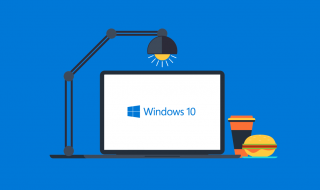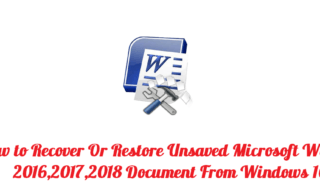Keeping a close eye on employee productivity levels is as necessary for company growth as knowing what your competition is up to.
While employee monitoring software has been in full expansion for the last couple of years, with the pandemic raging for the better part of 2020, companies that had the option to move their operations online created a second-wave industry boom.

For one, those that had no or very little prior experience with remote work were interested in ensuring their employees were actually fulfilling their professional obligations outside of the office setting as they did while working right before their managers’ eyes.
On the other hand, those that had already tried an occasional work-from-home day and whose employees had the opportunity to work and travel, for example, now wanted to solidify a fair working environment.
In both cases, monitoring remote employees gave companies a chance to dig deeper into the working habits and ethics of their staff and find ways to utilize all this data for increasing their productivity and, ultimately, the company bottom line.
But can such monitoring software really increase employee productivity and how? Let’s find out.
- Accurate Time and Activity Measuring
In the office setting, tracking employees’ comings and goings is pretty easy and straightforward – someone is always there to notice when you’ve come to work and at what time you left. If it’s not the manager, then it’s other team members. If it’s not them, it’s the receptionist.
In other words, people are doing the job of employee tracking software.
And while people believe their eyes more than anything else, they can never be as precise as a dedicated computer software. Not only are such tools able to measure time spent working down to the second, but it also takes into account employee activity at work.
It’s simply not enough to log in and be present – you need to be working as well for it to show in your stats.
Algorithms differ from one software to the next, but all of them have specific ways of measuring employee activity – on the computer, on the phone, in the field – as employee monitoring software can be very industry-specific and attuned to particular company needs.
Moreover, some pieces of monitoring software are able to distinguish between different resource usage and base productivity levels on that. The most obvious method is via screen capturing, but they also include website and app use.
In more advanced tools, managers have the option to label certain resources as productive, unproductive and neutral not only on the team level, but also for every individual employee based on the nature of their professional obligations. Such customization options make productivity information much relevant and easier to digest, as well as act upon.
- Precise Project Management
Project management is another common feature in most remote worker monitoring software since it allows a wholesome working progress overview in real time.
Having access to insights that show a direct correlation between the workload and the amount of time necessary for it to be handled provides all involved with the means of determining the standard for quality work.
By breaking down projects into easily traceable individual tasks and monitoring how much time is necessary for their completion, managers are able to assign and adjust workload evenly and optimally for meeting deadlines, as is often crucial for success.
In addition, having uninterrupted access to their own productivity levels from objective employee tracking software enables workers to develop and maintain a sense of self-accountability which in turn helps them to improve their effectiveness at work. That way, the entire team can be comfortable with the set deadlines and deliverability expectations and can depend on colleagues not to affect each other’s tempo of work and task organization.
- Facilitated Performance Reviewing
Conducting comprehensive performance reviews can present a big challenge for the company that has no clear tactics or means of doing it properly.
In that sense, gathering unbiased and precise information on each employee’s working habits and dedication in continuum via screen monitoring software provides infinitely more authoritative results to any other source.
Asking employees to grade their colleagues’ quality of work over a particular period is not only ungrateful, but also full of subjectivity brought on by interpersonal relationships (good and bad), personal agenda, as well as lack of knowledge completeness.
Having in mind that performance reviews often result in a change in professional circumstances such as promotion or demotion, change in duties and goal expectations, and more, it’s in every company’s interest to handle such decisions with all the information available.
In this sense, (remote) employee monitoring provides a continuous way of tracking employee time and workload management skills, worktime and resource use ethics, as well as workplace satisfaction, and acting accordingly in the interest of improving the employer-employee relationship in the long run, and thus worker productivity.
- Conflict Prevention and Resolution
Workplace conflicts are possible in the office setting as much as in fully remote companies. While the actual reasons behind them can be more or less justified and easily solvable, the fact is that they have the power to cause imbalance among coworkers and reduce productivity on all levels.
Therefore, the best way to handle this issue is to simply prevent work-related grievances by implementing (remote) worker monitoring software and gather objective evidence of workplace behavior.
For example, you may have employees who are spending their working hours browsing social media or simply not putting in the negotiated number of hours. Employee time theft is an issue that may show its consequences by lowering productivity levels for all team members who see this type of behavior as unfair.
However, it may also cause serious conflicts among employees and require companies to examine all relevant information gathered as part of obligatory email retention policies and present it to the court should it become a legal issue. In this regard, the cost of using employee monitoring software and other similar tracking tools becomes a lucrative investment against possible hefty legal fees.
- Straightforward Payment and Billing
Together with the precise measuring of the time spent working – and working productively, at that – comes a safe and irrefutable way of getting financial compensation.
If your company has an hour-based payment system, then automating time tracking and calculating the corresponding pay is greatly facilitated by the use of objective systems like employee tracking software with the integrated billing component. Furthermore, it prevents all types of worktime manipulations, artificial increase of billable hours and avoidance to pay.
It can also be incredibly effective if your company is habitually hired by clients companies or hiring freelancers for specific projects or duties, as it allows for precise measuring of working hours spent on the project, limiting the number of billable hours, and optimal resource and finance management. In this regard, companies can successfully plan the budget, monitor spending in real time, and make necessary adjustments with the help of quality monitoring tools.
Conclusion
While employee monitoring software is getting increasingly more popular in the business world, a large part of it is still having difficulties capturing all its benefits – maintaining a healthy and fair working environment, keeping employees responsible and accountable for how they spend their time at work, as well as basing strategic decisions on raw data from within the company itself. However, it seems that things are looking up in this respect and we can expect this type of tool to become a must-have in the very near future.



